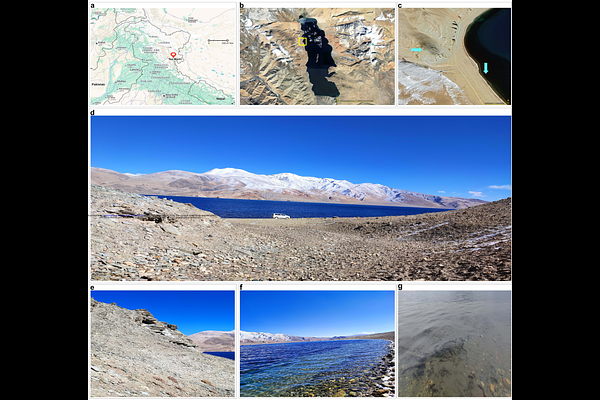Psychrophilic and cryophilic bacterial copiotrophs from a Trans-Himalayan lake-desert ecosystem as biogeothermometers of warming, mitigators of perturbation, and candidates for biodegradation

Psychrophilic and cryophilic bacterial copiotrophs from a Trans-Himalayan lake-desert ecosystem as biogeothermometers of warming, mitigators of perturbation, and candidates for biodegradation
Chatterjee, S.; Dutta, S.; Ghosh, J.; Saha, S.; Mondal, M.; Sarkar, J.; Mondal, N.; Ghosh, W.
AbstractA Trans-Himalayan lake-desert ecosystem (Tso Moriri, Changthang; Ladakh) was explored for the culturable diversity, and extreme-temperature adaptations, of psychrophilic/cryophilic bacterial chemoorganoheterotrophs. 27 species, under 15 genera across Actinomycetota, Bacillota, Bacteroidota, and Pseudomonadota, were isolated from the lake-sediment, lake-water, and fine-talus covering a lake-side rocky mountain. In Luria broth, all isolates grew at 4{degrees}C and 15{degrees}C; 13 grew, and 14 retained 19-99% cells in metabolically-active state, at -10{degrees}C; 23, 11, and none grew at 28{degrees}C, 37{degrees}C, and 42{degrees}C respectively. A Cryobacterium was most heat-susceptible (0.24% cells metabolically-active at 28{degrees}C); some cryophilic Arthrobacter, Microbacterium, Paenarthrobacter, Pseudomonas and Streptomyces were most warming-resilient (growth at 37{degrees}C; 7-58% cells active at 42{degrees}C). Using different simple/complex organic compounds, all isolates accomplished low/moderate/high growths at 4{degrees}C, 20 performed small growths at -10{degrees}C. Taxonomy/phylogeny did not govern the isolates' psychrophilic/cryophilic potentials or warming resilience. Lake-water and rock-dust isolates had the widest, while lake-sediment-dwellers had the narrowest, temperature-window for growth/survival. Most actinobacterial isolates could eradicate mesophilic bacteria from other warmer ecosystems, alongside non-actinobacteria and actinobacteria from their native/adjoining Tso Moriri habitats. Implications are discussed for negative feedback control of warming, microbiome protection from infiltration amidst climate-warming, niche partitioning within cold/frigid microbiomes, and cryophilic copiotrophs as constituents of cold-customized bioreactors.